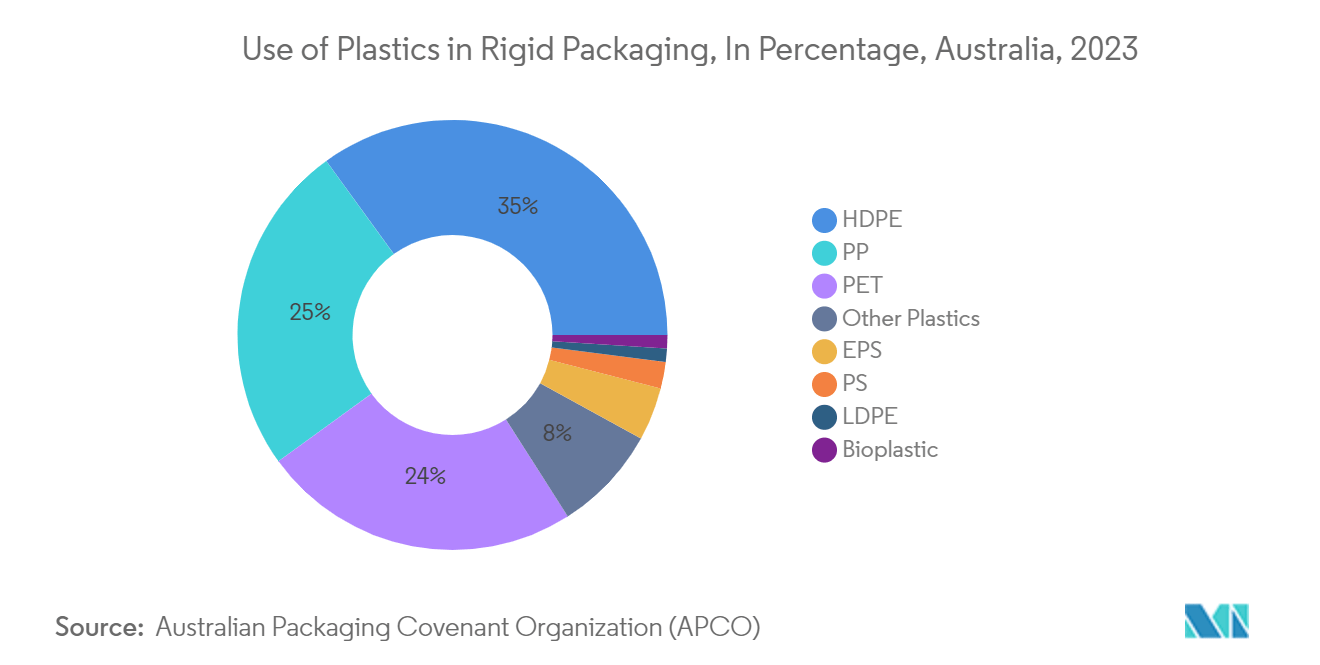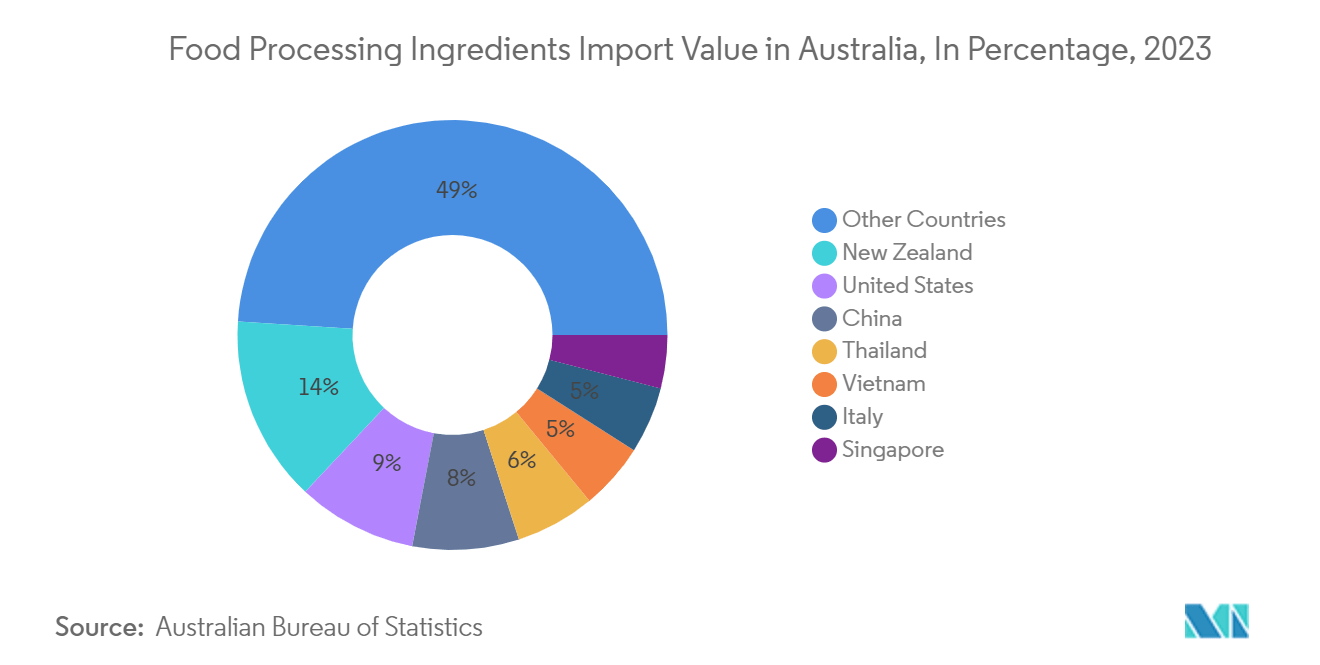Market Trends of Australia Plastic Packaging Industry
The Rigid Packaging Segment is Expected to Register the Highest Growth
- Australia's robust appetite for plastic packaging, driven by its high plastic consumption, is a key driver of the market's growth. Data from Chemistry Australia, a governmental body, reveals the nation's annual plastic product consumption is around 3.5 million tonnes.
- Rigid packaging plays a pivotal role in product manufacturing and distribution. It primarily consists of robust materials like metals, glass, and specific plastics such as polyethylene, polypropylene, and PET. Its diverse applications safeguard products from food and beverages to electronics and cosmetics.
- The Australian food and beverage sector is rapidly expanding, fueled by rising tourism and evolving consumer tastes. The Australian Beverage Council highlights that packaged water, including spring, purified, and mineral variants, reigns as the leading non-dairy and non-alcoholic beverage in the country.
- Moreover, as Australian consumers increasingly seek healthy and convenient food options, the demand for convenience foods is on the rise, translating to a heightened use of plastics in packaging.
- The surging demand for polyethylene (PE) and polypropylene (PP) plastics in Australia, specifically for rigid packaging, is a significant growth driver. HDPE and LDPE are the predominant materials for caps and closures, with HDPE being prevalent in packaged water, dairy products, and juice bottles. In 2023, data from the Australian Packaging Covenant Organization (APCO) indicated that 35% of rigid packaging in Australia was composed of HDPE, followed by 25% of PP.

The Food Segment is Expected to Dominate the Market
- As of 2023, Australia was the 14th largest economy globally, as reported by the United States Department of Agriculture (USDA). It stands out with one of the world's highest per capita GDP levels and holds the second spot for median wealth per adult, according to UBS's 2023 Global Wealth Report.
- Australia's push toward sustainable food packaging is primarily fueled by a rising tourism sector and a domestic population increasingly seeking convenience in packaged food products. This surge in demand is notably boosting both rigid and flexible packaging needs in the nation. Australian consumers are showing a clear preference for environmentally conscious products and brands. Consequently, food producers and retailers are channeling significant investments into sustainable practices, further propelling the market's growth.
- Key players in the country, such as Orora Packaging Australia Pty Ltd, are at the forefront, offering innovative and sustainable packaging solutions. Their range includes boxes, bottles, and packaging films designed to elevate product protection across various industries. Moreover, Orora provides tailored customization options, helping their client's brands stand out on retail shelves.
- Backing this trend, the USDA highlights that Australia's expanding food processing sector is a direct response to the surging consumer appetite for novel food offerings. In 2023, the country imported food processing ingredients worth USD 13.2 billion, with New Zealand, the United States, and China emerging as its top three suppliers, significantly bolstering the local market.


